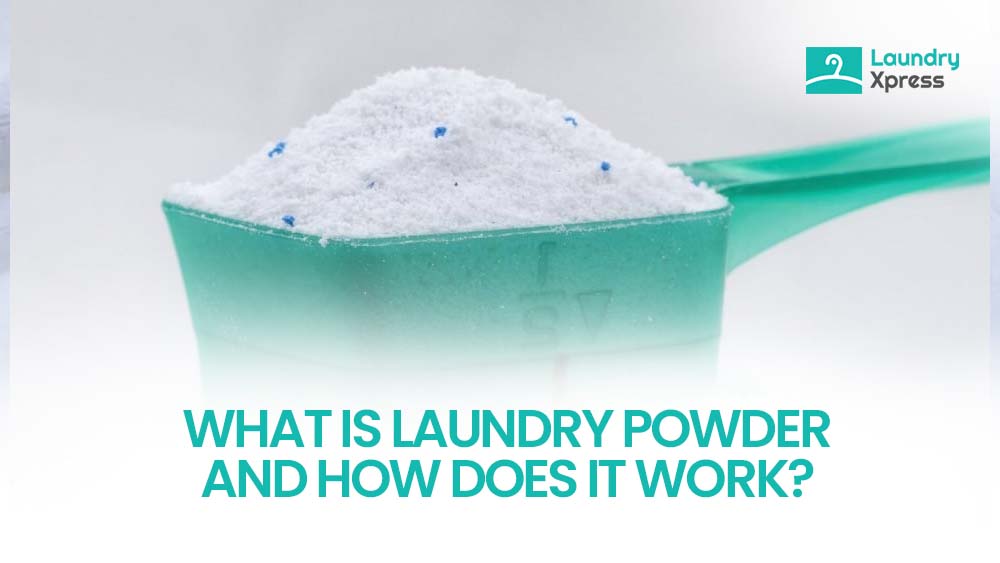You’re likely familiar with laundry powder, but have you wondered what makes it effective? It’s a concentrated cleaning agent that removes tough stains. You’ll find it’s a mix of surfactants, enzymes, and builders that break down proteins and soften water. What else does it contain, and how does it work?
Components of Laundry Powder
To understand how laundry powder works, it’s important to know what’s inside it. Here are the primary components that make this cleaning powerhouse so effective:
- Surfactants (Surface-Active Agents):
These are the main cleaning ingredients that loosen dirt and oil from fabrics. Surfactants reduce the surface tension of water, allowing it to penetrate deep into fabric fibers.
- Builders:
Builders like sodium carbonate or zeolites soften the water, helping surfactants work more effectively. They also prevent minerals from interfering with the cleaning process.
- Enzymes:
Enzymes in detergent laundry powder target specific types of stains such as proteins (blood, sweat), starch (food residues), and fats (grease).
- Bleaching Agents:
Oxygen-based bleach brightens whites and removes deep-seated stains without damaging fabrics.
- Optical Brighteners:
These chemicals make whites look whiter and colors appear more vibrant.
- Fragrances and Additives:
Added a fresh scent and improved the overall laundry experience.
When you choose a laundry powder, consider what components are included and how they’ll impact your washing experience. The combination of these components makes laundry powder a convenient and effective cleaning solution for your clothes.
How Laundry Powder Removes Stains?
Stains don’t stand a chance against the powerful combination of components in laundry powder. You’ll find that tough stains like grease and food are easily lifted when you use laundry powder.
As you wash your clothes, the powder’s enzymes break down protein-based stains, while surfactants help loosen and remove dirt and grime. You can rely on laundry powder to tackle a wide range of stains, from mud to ink.
When you add laundry powder to your wash, it quickly gets to work, penetrating deep into fabrics to remove even the toughest stains. You’ll be left with clean, fresh-smelling clothes that look like new. With its effective stain-removing power, laundry powder is a must-have for anyone who wants to keep their clothes looking their best. It’s easy to use and makes doing laundry a whole lot simpler.
How Laundry Powder Works Step by Step
Here’s what happens when you add powder laundry detergent to your washing machine:
- Dissolving Phase:
Once water enters the drum, the laundry powder dissolves, activating its cleaning agents. Warm or hot water helps it dissolve faster.
- Breaking Down Stains:
Surfactants and enzymes start breaking down dirt, grease, and protein stains, while builders enhance this action by softening the water.
- Suspending the Dirt:
The loosened particles are suspended in the water, preventing them from reattaching to the fabric.
- Rinsing and Freshening:
During rinsing, all the residues, dirt, and stains are washed away, leaving clothes bright, soft, and odor-free.
This simple yet effective mechanism makes detergent laundry powder a reliable choice for deep cleaning, especially for whites, linens, and workwear.
Powder Laundry Detergent vs Pods: Which Is Better?
| Feature | Powder Laundry Detergent | Pods |
| Cleaning Power | Powder laundry detergent is known for its strong cleaning performance. It effectively removes tough stains, brightens whites, and works well for heavy loads. | Pods are convenient but contain a fixed amount of detergent, which may not be enough for heavily soiled clothes. |
| Cost and Value | Detergent laundry powder is more economical and lasts longer, offering more washes per box. | Pods are more expensive per load due to single-use packaging and pre-measured portions. |
| Ease of Use | Requires manual measuring before each wash, which can be slightly less convenient. | Pods are extremely easy to use, just toss one into the drum without measuring. |
| Environmental Impact | Laundry powder usually comes in recyclable boxes, creating less plastic waste and making it a greener choice. | Pods are often sold in plastic containers and wrapped in dissolvable film that may not always be eco-friendly. |
Environmental Impact of Laundry Powder
Your choice of laundry powder doesn’t just affect how clean your clothes get, it also impacts the environment. You’re releasing chemicals into the water system every time you do laundry.
Some laundry powders contain phosphates, which can harm aquatic life. You’re also contributing to water pollution if your laundry powder contains toxic chemicals. When you choose a laundry powder, you’re deciding what chemicals will be released into the environment.
You should consider the environmental impact of your laundry powder, as it can affect local ecosystems. Many laundry powders are now designed to be more eco-friendly, using natural ingredients and biodegradable materials. You can make a difference by choosing a laundry powder that’s better for the environment. This helps reduce your carbon footprint and protects local wildlife.
Frequently Asked Questions
1- Can Laundry Powder Damage Clothing Fibers?
You’ll find that laundry powder can damage clothing fibers if you don’t use it correctly, so you’re checking the label to ensure you’re using the right amount and type for your clothes.
2- Is powder laundry detergent better than liquid or pods?
It depends on your needs. Powder laundry detergent is great for deep cleaning, tough stains, and whites, while pods offer convenience and are ideal for smaller or quick loads. However, detergent laundry powder remains the most cost-effective and eco-friendly choice overall.
3- How much powder laundry detergent should I use?
The amount depends on load size, soil level, and water hardness. Usually, 1–2 tablespoons of detergent laundry powder are enough for a regular load. Using too much can leave residue, while too little may not clean effectively.





